Hemostasis & Tissue Sealing Agents Market Size
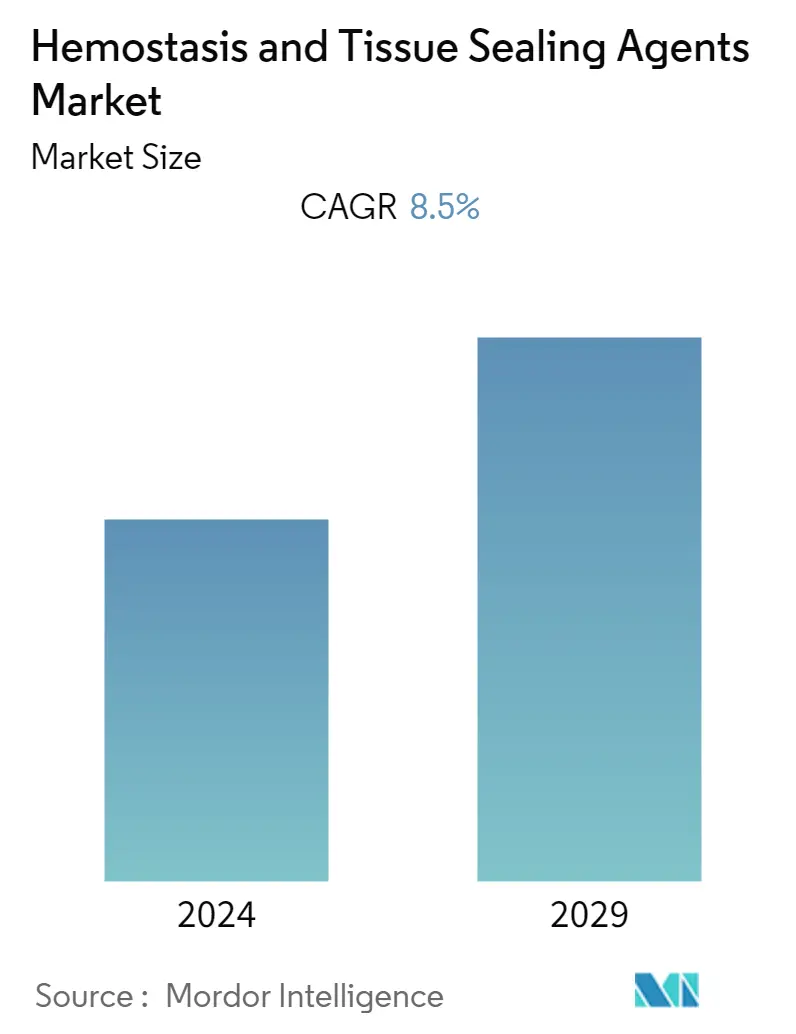
| Study Period | 2019 - 2029 |
| Base Year For Estimation | 2023 |
| CAGR | 8.50 % |
| Fastest Growing Market | Asia-Pacific |
| Largest Market | North America |
| Market Concentration | Low |
Major Players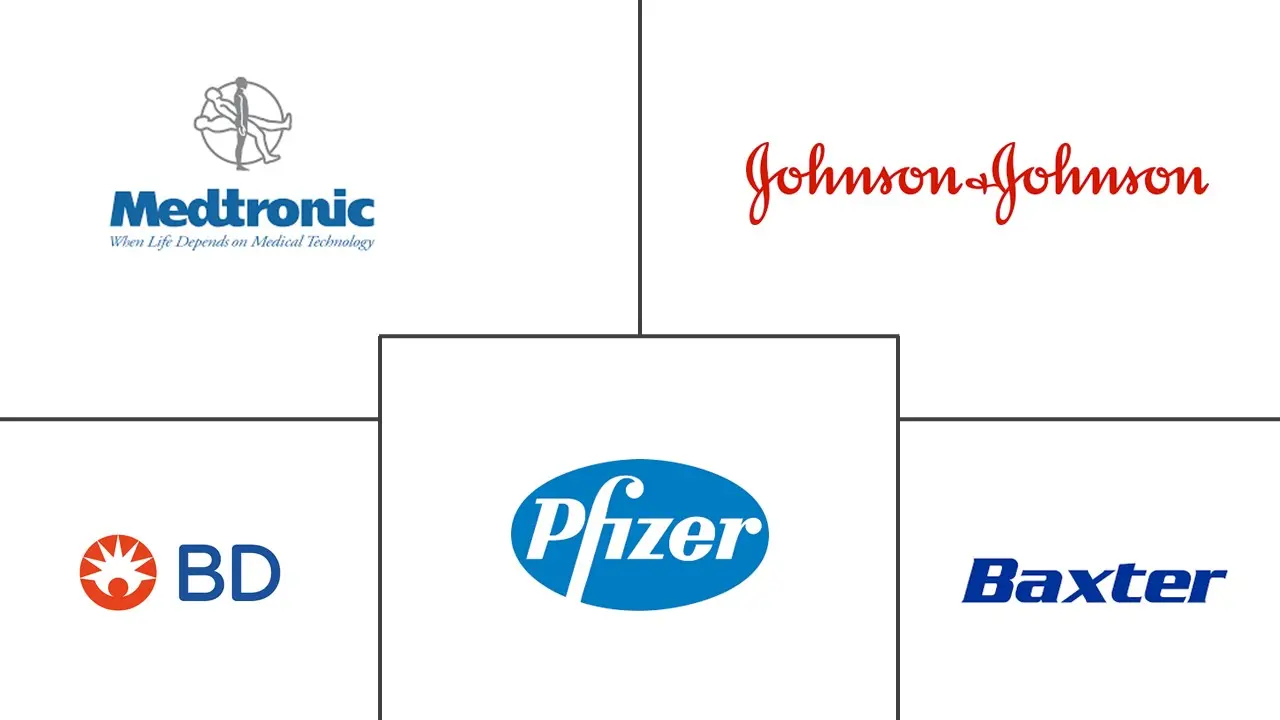
*Disclaimer: Major Players sorted in no particular order |
Hemostasis & Tissue Sealing Agents Market Analysis
The hemostasis and tissue sealing agents market is expected to register a CAGR of 8.5% over the forecast period.
- The COVID-19 pandemic had a substantial effect on the hemostasis and tissue sealing agents market. The market expanded together with the rising significance of imbalanced hemostasis in COVID-19 patients in favor of a prothrombotic state, and their impact on prognosis also had a beneficial impact on market growth. Patients with COVID-19 were predicted to experience a critical illness, hemorrhage, mortality, and thrombosis by an elevated D-dimer level at the time of hospital admission. According to a research article published in PubMed in November 2021, hemostasis could be a risk factor for COVID-19 mortality and disease severity. As a result, the market expanded favorably both before and after COVID-19.
- Factors such as the increasing number of surgical procedures as well as the rising number of road accidents are expected to significantly contribute to the growth of the hemostasis and tissue sealing agents market. For instance, according to a study published in the International Journal of Surgery in September 2020, 310 million major surgeries are carried out annually worldwide, with 40 to 50 million taking place in the United States and 20 million in Europe. Such factors are likely to boost the usage of hemostasis and tissue-sealing agents, thereby contributing to the studied market growth.
- Moreover, the increasing prevalence of chronic blood disorders is also driving the market's growth. As per the 2022 update by the International Society on Thrombosis and Hemostasis, every year, there are approximately 10 million cases of venous thromboembolism worldwide. As per the same source, in Europe, there are 544,000 Deep Vein Thrombosis (DVT) related deaths every year. According to the Disorders of the Blood 2022 report by PhRMA published in May 2022, more than 3.2 million Americans are living with a bleeding disorder yearly. Therefore, an increase in the number of patients with blood disorders, along with the growing need to cater to various bleeding conditions, is likely to fuel the market for hemostasis and tissue-sealing agents.
- The rise in the number of surgical procedures and the prevalence of chronic diseases (such as blood disorders) are significant factors driving the growth of the market studied. However, strict regulations on the approval of these agents coupled with the high costs of these agents are expected to hinder the growth of the market over the next five years.
Hemostasis & Tissue Sealing Agents Market Trends
This section covers the major market trends shaping the Hemostasis & Tissue Sealing Agents Market according to our research experts:
General Surgery Segment is Expected to Hold a Significant Market Share
- Hemostats consist of hemostatic agents, adhesives, and sealants that contain thrombin and play a prominent role in controlling blood loss during surgeries. The Journal of Medical Economics published a research study in April 2021, reporting that patients undergoing cardiac, vascular, noncardiac thoracic, and neuro surgeries immediately treated with active products as a first-line adjunctive hemostat may experience more effective or sustained hemostasis, resulting in a shorter hospital stay as well as lower risk of complications thereafter, thus lowering the total hospital costs.
- As per the research study published in June 2021 by the German Heart Surgery Report, a total of 92,809 operations were classified as heart surgery procedures in a conventional manner, and the number of isolated heart transplantations increased by 2% to 340. According to the British Heart Foundation's February 2021 report, about 371,000 heart procedures and operations were performed in England in 2020. Hence, the high number of heart surgeries and operations being performed every year may boost the demand for hemostat agents that control bleeding.
- In addition, increasing key strategic activities such as mergers and acquisitions and product launches by the key market players are anticipated to boost the segment's growth over the forecast period. For instance, in November 2022, Medtrade Products Ltd announced CE certification for its Uterine Hemostatic Tamponade, CELOX, which is a significant and state-of-the-art innovation that provides rapid and effective control of postpartum bleeding, a prevalent and severe complication of childbirth.
- Thus, all aforementioned factors, such as the increasing number of surgical procedures and the product launches by key market players, are expected to boost the segment over the forecast period.
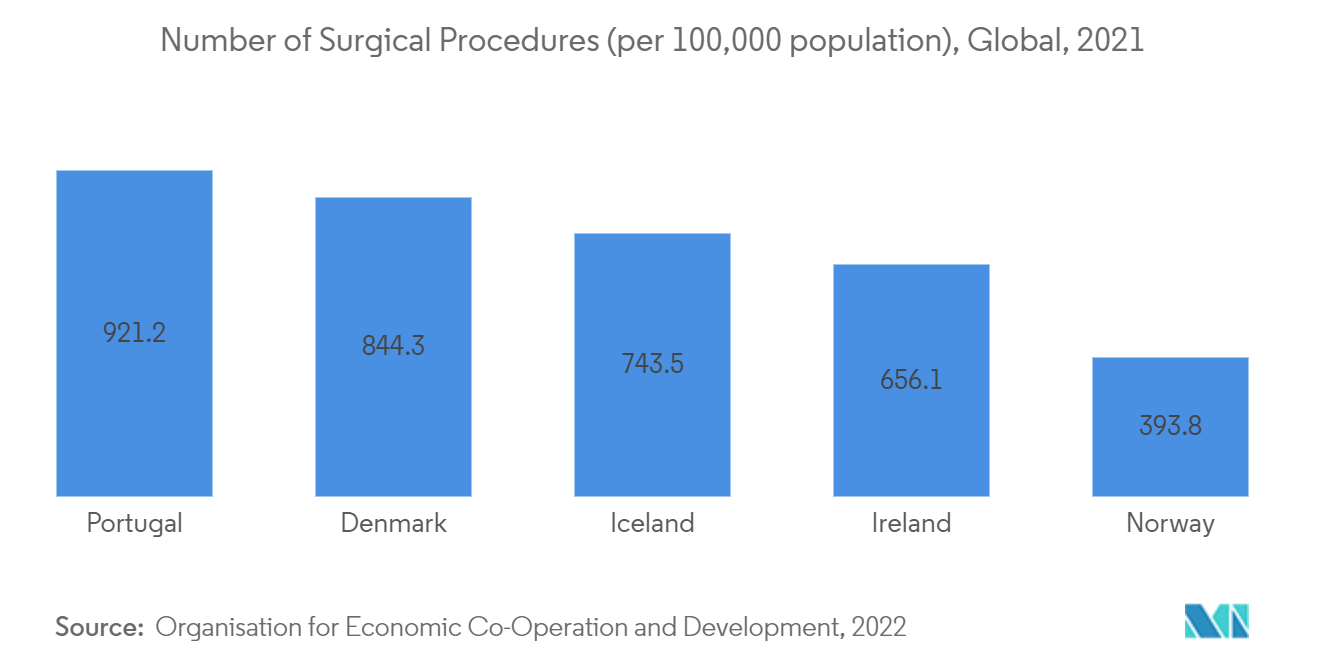
North America is Expected to Dominate the Market
- North America is anticipated to dominate the hemostasis and tissue sealing agents market owing to the high clinical research and development budgets by both governments as well as public and private organizations, the presence of major manufacturers for the products, and a high number of surgical procedures.
- The region's growing geriatric population has been fueling demand for less invasive surgical treatments, which in turn is promoting expansion in the market for hemostasis tissue sealing agents. According to the February 2022 update by the US Census Bureau, there were over 55 million senior citizens living in the United States in the year 2021, making up 17.1% of the total population. According to estimates, the total number of adults aged 65 and older is projected to rise to roughly 22% of the overall US population by 2050. This generation's population has a higher prevalence of obesity and chronic conditions than previous generations, which will likely change the amount and type of care they require.
- Furthermore, a significant market exists for cutting-edge hemostasis products in North America due to the increased prevalence of cardiovascular diseases. The frequency of cardiac operations is likely to rise along with the prevalence of cardiovascular disorders in the area, which is predicted to enhance demand for hemostasis products and fuel market expansion. The growth can also be attributed to the presence of top pharmaceutical and biotechnology companies that are involved in technological developments and the presence of well-established healthcare infrastructure. For instance, in July 2021, Medcura Inc., a commercial-stage medical device company, in partnership with ASO LLC, a major United States manufacturer and supplier of first aid products, reported the launch of a high-performance, antibacterial hemostatic gel, Rapid-Seal, at a leading US drugstore chain. Thus, over the forecast period, technological advancements, a rising percentage of the geriatric population, and support from the government through reimbursement and innovation in products are expected to be the major drivers for the growth of the hemostasis and tissue sealing market.
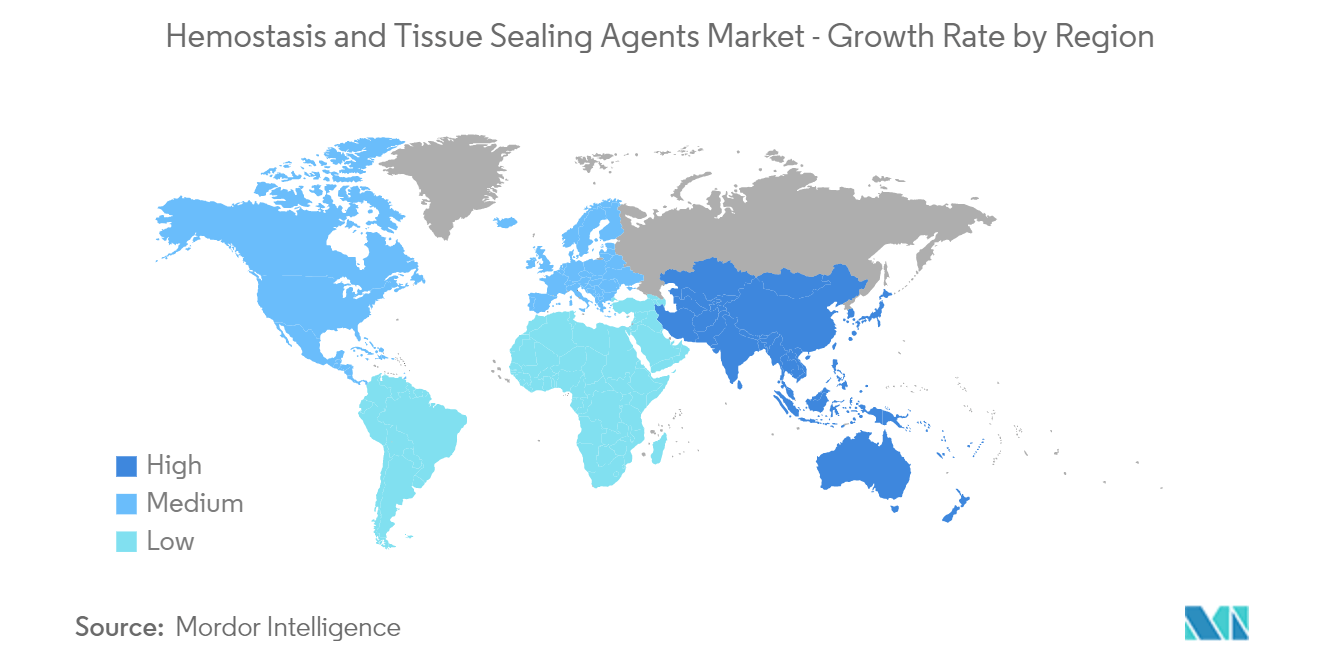
Hemostasis & Tissue Sealing Agents Industry Overview
The hemostasis and tissue sealing agents market is moderately fragmented and consists of a number of major players, like Baxter International Inc., B Braun Holding GmbH & Co. KG, Becton, Dickinson & Company, Ethicon LLC, Integra Lifesciences Corporation, Johnson & Johnson, Medtronic PLC, Pfizer Inc., Smith & Nephew, Terumo Corporation, among others.
Hemostasis & Tissue Sealing Agents Market Leaders
-
Baxter International, Inc.
-
Becton, Dickinson & Company
-
Johnson & Johnson
-
Medtronic Plc.
-
Pfizer, Inc.
*Disclaimer: Major Players sorted in no particular order
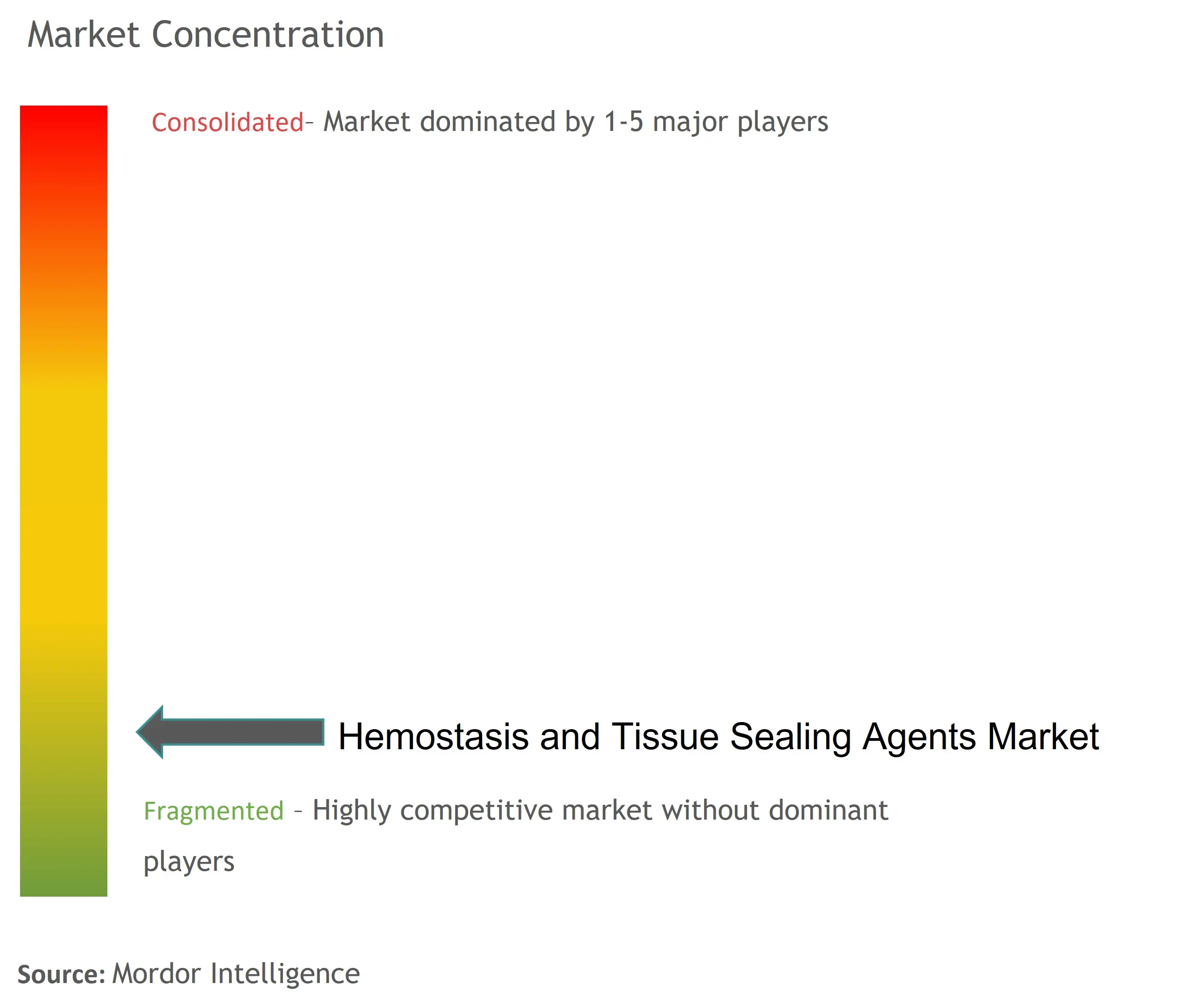
Hemostasis & Tissue Sealing Agents Market News
- October 2022: Creilson, Inc., a Brooklyn-based biotechnology firm, announced its successful completion of a USD 25 million Series A-4 financing round led by Paulson Investment Company to accelerate bringing its revolutionary hemostatic gel, VETIGEL, into the human health market following its submission of a 510(k) premarket notification to the US Food and Drug Administration.
- July 2021: Baxter International Inc. acquired certain assets of CryoLife's PerClot Polysaccharide Hemostatic System for up to USD 60.8 million.
Hemostasis & Tissue Sealing Agents Market Report - Table of Contents
1. INTRODUCTION
- 1.1 Study Assumptions and Market Definition
- 1.2 Scope of the Study
2. RESEARCH METHODOLOGY
3. EXECUTIVE SUMMARY
4. MARKET DYNAMICS
- 4.1 Market Overview
-
4.2 Market Drivers
- 4.2.1 Increasing Prevalence of Chronic Blood Disorders
- 4.2.2 Increasing Number of Surgical Procedures and Road Accidents
- 4.2.3 Adoptability of Products across Multiple Conditions
-
4.3 Market Restraints
- 4.3.1 High Cost of the Products
- 4.3.2 Stringent Regulations and Approvals
-
4.4 Industry Attractiveness - Porter's Five Force Analysis
- 4.4.1 Threat of New Entrants
- 4.4.2 Bargaining Power of Buyers/Consumers
- 4.4.3 Bargaining Power of Suppliers
- 4.4.4 Threat of Substitute Products
- 4.4.5 Intensity of Competitive Rivalry
5. MARKET SEGMENTATION (Market Size by Value - USD million)
-
5.1 By Product Type
- 5.1.1 Topical Hemostats
- 5.1.1.1 Mechanical Hemostats
- 5.1.1.2 Active Hemostats
- 5.1.1.3 Flowable Hemostats
- 5.1.2 Tissue Sealing Agents
- 5.1.2.1 Fibrin Sealants
- 5.1.2.2 Synthetic Sealants
- 5.1.3 Adhesives
- 5.1.3.1 Cyanoacrylate
- 5.1.3.2 Albumin and glutaraldehyde
-
5.2 By Material
- 5.2.1 Gelatin based Topical Hemostats
- 5.2.2 Collagen-based Topical Hemostats
- 5.2.3 ORC-based Topical Hemostats
- 5.2.4 Polysaccharide based Topical Hemostats
-
5.3 By Application
- 5.3.1 General Surgery
- 5.3.2 Minimally Invasive Surgery
- 5.3.3 Trauma
- 5.3.4 Hemophilia
- 5.3.5 Other Applications
-
5.4 By End-user
- 5.4.1 Hospitals
- 5.4.2 Ambulatory Surgical Centers
- 5.4.3 Other End Users
-
5.5 By Geography
- 5.5.1 North America
- 5.5.1.1 United States
- 5.5.1.2 Canada
- 5.5.1.3 Mexico
- 5.5.2 Europe
- 5.5.2.1 Germany
- 5.5.2.2 United Kingdom
- 5.5.2.3 France
- 5.5.2.4 Italy
- 5.5.2.5 Spain
- 5.5.2.6 Rest of Europe
- 5.5.3 Asia-Pacific
- 5.5.3.1 China
- 5.5.3.2 Japan
- 5.5.3.3 India
- 5.5.3.4 Australia
- 5.5.3.5 South Korea
- 5.5.3.6 Rest of Asia-Pacific
- 5.5.4 Middle East and Africa
- 5.5.4.1 GCC
- 5.5.4.2 South Africa
- 5.5.4.3 Rest of Middle East and Africa
- 5.5.5 South America
- 5.5.5.1 Brazil
- 5.5.5.2 Argentina
- 5.5.5.3 Rest of South America
6. COMPETITIVE LANDSCAPE
-
6.1 Company Profiles
- 6.1.1 Baxter International Inc.
- 6.1.2 B Braun Holding GmbH & Co. KG
- 6.1.3 Becton, Dickinson & Company
- 6.1.4 Ethicon LLC
- 6.1.5 Integra Lifesciences Corporation
- 6.1.6 Johnson & Johnson
- 6.1.7 Medtronic PLC
- 6.1.8 Pfizer Inc.
- 6.1.9 Smith & Nephew
- 6.1.10 Terumo Corporation
- *List Not Exhaustive
7. MARKET OPPORTUNITIES AND FUTURE TRENDS
** Subject To AvailablityHemostasis & Tissue Sealing Agents Industry Segmentation
As per the scope of the report, hemostasis is a process that controls bleeding. It is the first phase of wound healing, which involves blood coagulation, turning from a liquid to a gel. Hemostatic agents, sealants, and adhesives are utilized to improve hemostasis procedure outcomes and enhance overall patient care.
The Hemostasis and Tissue Sealing Agents Market is Segmented by Product Type (Topical Hemostats, Tissue Sealing Agents, and Adhesives), Material (Gelatin-based Topical Hemostats, Collagen-based Topical Hemostats, ORC-based Topical Hemostats, and Polysaccharide-based Topical Hemostats), Application (General Surgery, Minimally Invasive Surgery, Trauma, Hemophilia, and Others), and Geography (North America, Europe, Asia-Pacific, Middle East and Africa, and South America). The market report also covers the estimated market sizes and trends for 17 different countries across major regions globally. The report offers the value (in USD million) for the above segments.
| By Product Type | Topical Hemostats | Mechanical Hemostats |
| Active Hemostats | ||
| Flowable Hemostats | ||
| By Product Type | Tissue Sealing Agents | Fibrin Sealants |
| Synthetic Sealants | ||
| By Product Type | Adhesives | Cyanoacrylate |
| Albumin and glutaraldehyde | ||
| By Material | Gelatin based Topical Hemostats | |
| Collagen-based Topical Hemostats | ||
| ORC-based Topical Hemostats | ||
| Polysaccharide based Topical Hemostats | ||
| By Application | General Surgery | |
| Minimally Invasive Surgery | ||
| Trauma | ||
| Hemophilia | ||
| Other Applications | ||
| By End-user | Hospitals | |
| Ambulatory Surgical Centers | ||
| Other End Users | ||
| By Geography | North America | United States |
| Canada | ||
| Mexico | ||
| By Geography | Europe | Germany |
| United Kingdom | ||
| France | ||
| Italy | ||
| Spain | ||
| Rest of Europe | ||
| By Geography | Asia-Pacific | China |
| Japan | ||
| India | ||
| Australia | ||
| South Korea | ||
| Rest of Asia-Pacific | ||
| By Geography | Middle East and Africa | GCC |
| South Africa | ||
| Rest of Middle East and Africa | ||
| By Geography | South America | Brazil |
| Argentina | ||
| Rest of South America |
Hemostasis & Tissue Sealing Agents Market Research FAQs
What is the current Hemostasis and Tissue Sealing Agents Market size?
The Hemostasis and Tissue Sealing Agents Market is projected to register a CAGR of 8.5% during the forecast period (2024-2029)
Who are the key players in Hemostasis and Tissue Sealing Agents Market?
Baxter International, Inc. , Becton, Dickinson & Company , Johnson & Johnson, Medtronic Plc. and Pfizer, Inc. are the major companies operating in the Hemostasis and Tissue Sealing Agents Market.
Which is the fastest growing region in Hemostasis and Tissue Sealing Agents Market?
Asia-Pacific is estimated to grow at the highest CAGR over the forecast period (2024-2029).
Which region has the biggest share in Hemostasis and Tissue Sealing Agents Market?
In 2024, the North America accounts for the largest market share in Hemostasis and Tissue Sealing Agents Market.
What years does this Hemostasis and Tissue Sealing Agents Market cover?
The report covers the Hemostasis and Tissue Sealing Agents Market historical market size for years: 2019, 2020, 2021, 2022 and 2023. The report also forecasts the Hemostasis and Tissue Sealing Agents Market size for years: 2024, 2025, 2026, 2027, 2028 and 2029.
Hemostasis and Tissue Sealing Agents Industry Report
Statistics for the 2024 Hemostasis and Tissue Sealing Agents market share, size and revenue growth rate, created by Mordor Intelligence™ Industry Reports. Hemostasis and Tissue Sealing Agents analysis includes a market forecast outlook to 2029 and historical overview. Get a sample of this industry analysis as a free report PDF download.



